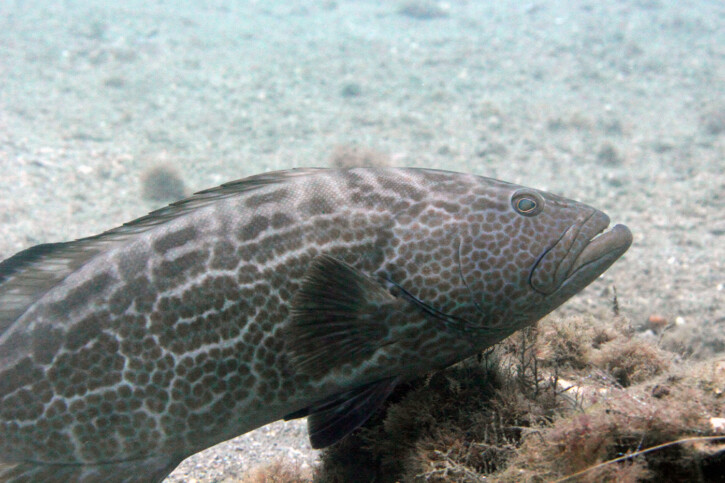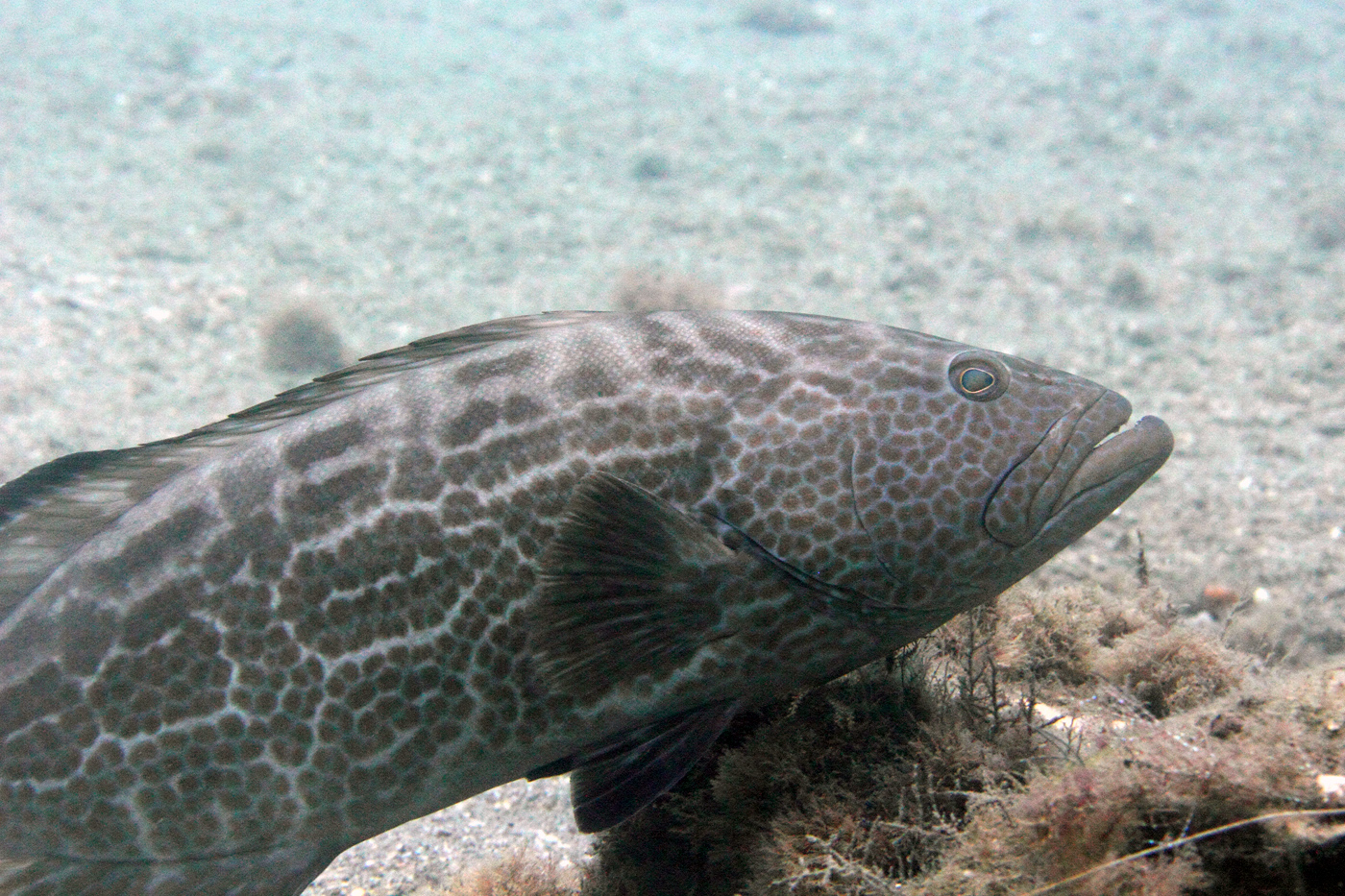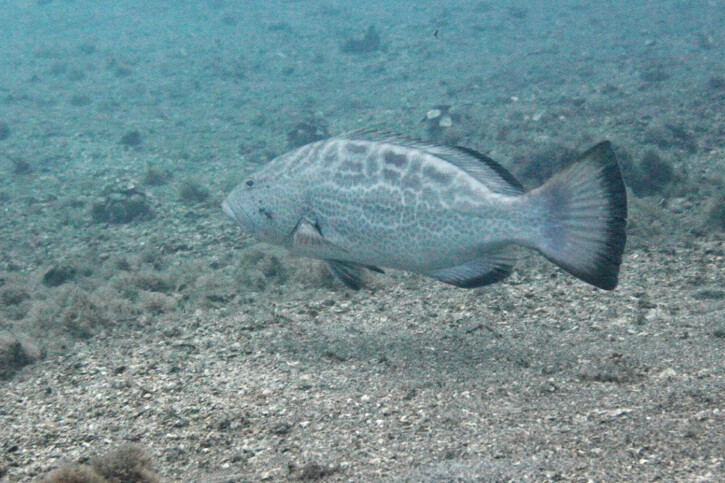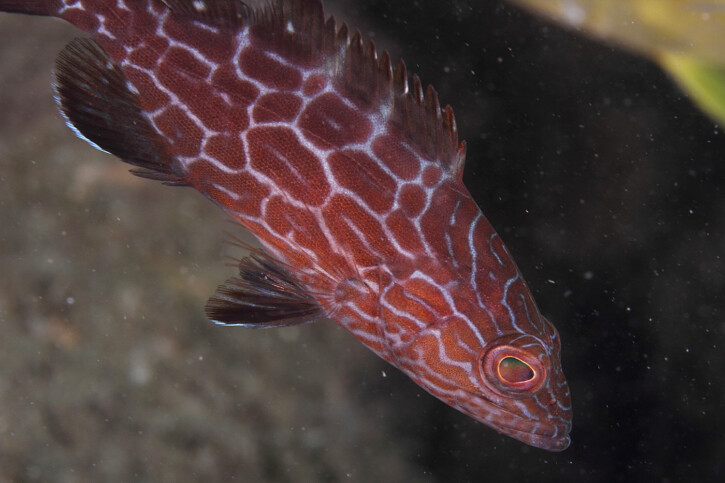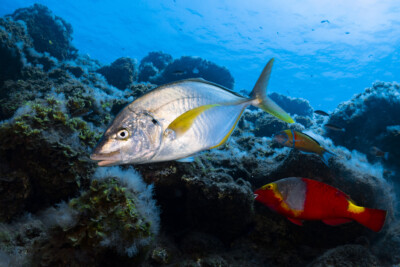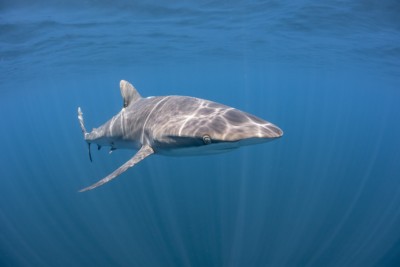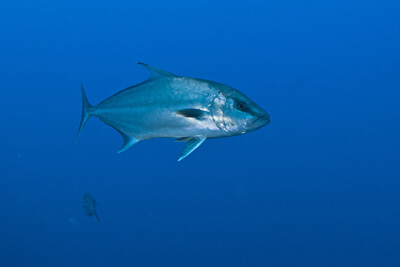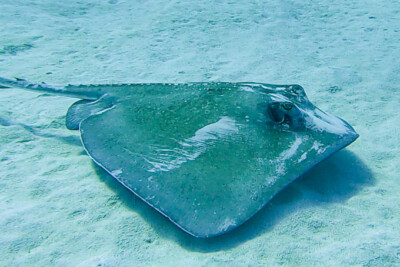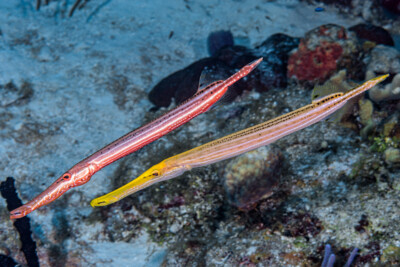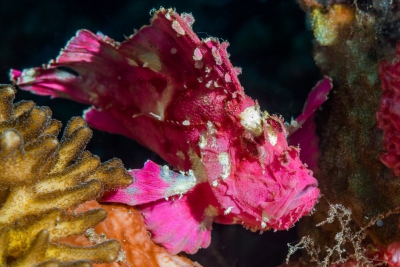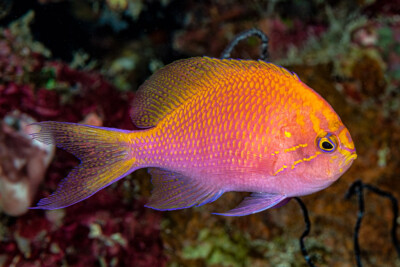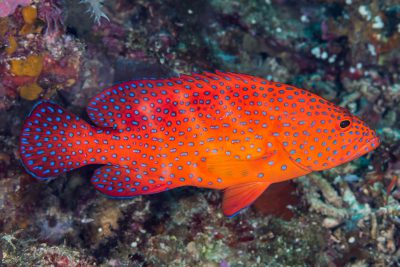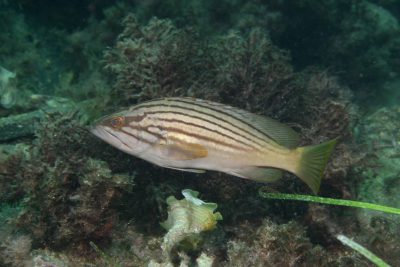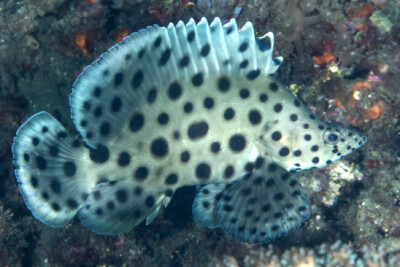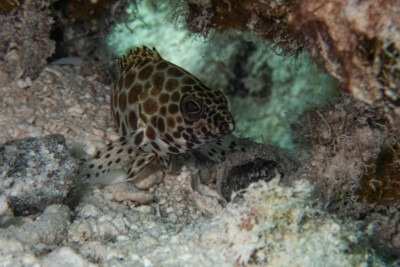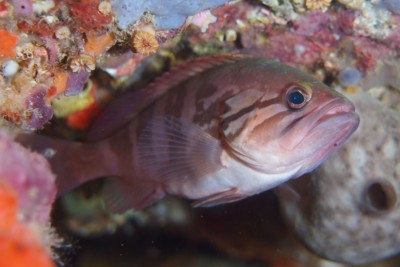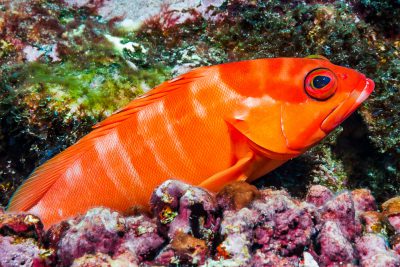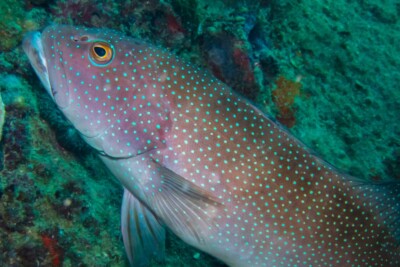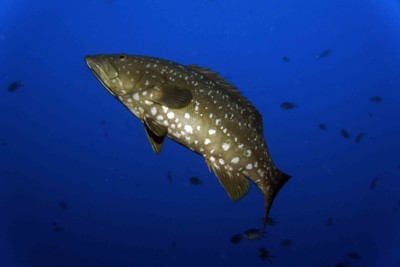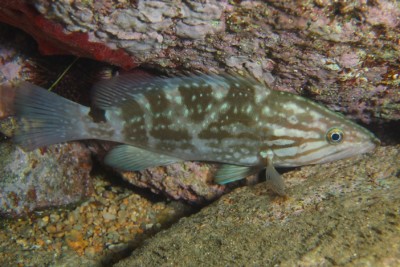Introduction
Mycteroperca bonaci, commonly known as black grouper, is a salt water fish.
This sheet is currently being prepared. The texts currently proposed come from our data model or are being drafted. To request priority for this content, you can write to us HERE.
Who is it?
Morphology
-
Average size70 cm
-
Maximum size150 cm
-
Longevity35 year
-
Patternmottling
-
Average size70 cm
-
Maximum size150 cm
-
Longevity35 year
-
Patternmottling
How to recognize This fish ?
The black grouper measures around 70 cm. The dominant males can however reach 150 cm. This fish is bicolore with a predominantly marron and beige body. The also has marron mottling.
Sexual dimorphism
The adult male is bigger than the female.
Behaviour & Life cycle
-
dietcarnivorous
-
Sociabilitysolitary
-
territorialYes
-
Way of livingdiurnal
This species tends to be easily stressed: this uneasiness is characterized by the appearance of marked black bars on its whole body.
The black grouper is a fish solitary naturally found at mid-depth and near the bottom. This species is carnivorous .
The black grouper is a territorial animal that does not tolerate any incursions into its living area. It is particularly virulent against other territorial species and it can provoke heated fights. Relationships between conspecifics are also hectic, with each seeking to secure its place.
Reproduction
-
Reproductionovipare qui pond en eau libre
-
Hermaphroditeprotogynous
The black grouper is a fish ovipare qui pond en eau libre. always born female. Growing up, individuals will change sex to become male, this is called successive hermaphroditism of the protogynous type. This fish protects its eggs from nearby predators.
Harmless species
This species does not represent any particular threats to humans when encountered in its natural environment.
Origin and distribution
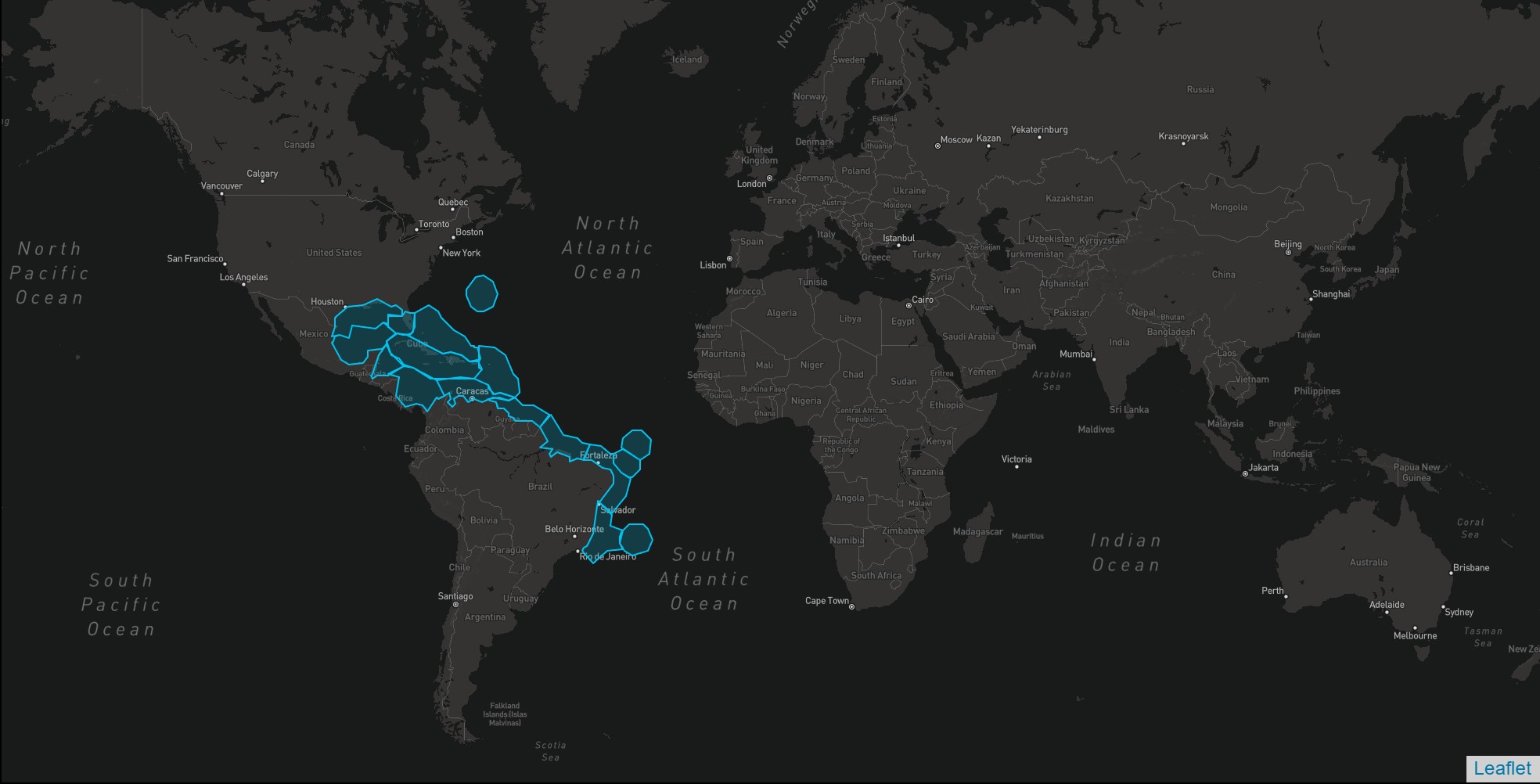
Conservation status of populations (IUCN)
What is its habitat?
Natural environment characteristics
-
Temperature23 - 28 °C
-
Depth60 - 250 m
Biotope presentation
The black grouper is most often found at a depth between 60m and 250m. However, it is not impossible to find this species at other depths.
Species of the same biotope
To go further
Sources & Contributions
Participation & Validation
The Fishipedia team and specialist contributors are committed to providing high-quality content. However, although the information comes from scientific sources or testimonials from specialists, the cards may contain inaccuracies.

Adrien Falzon

Achille Lenglin
Translation
Translation done with the valuable contribution of our translators, who make this information available to a wider audience. We sincerely thank them for their commitment.
Bibliographic references
- - GBIF
- - Reproduction in the protogynous black grouper Mexico (Mycteroperca bonaci (Poey)) from the southern Gulf of Mexico. - Brulé, T. - Renan, X. - Colás-Marrufo, T. - Hauyon, Y. - Tuz-Sulub, A. N. - Déniel, C. - Fishery Bulletin - 2003.
- - Confirmation of functional hermaphroditism in six grouper species (Epinephelidae: Epinephelinae) from the Gulf of Mexico - Brulé, T. - Caballero-Arango, D. - Renan, X. - Colás-Marrufo, T. - Cybium - 2016.
- - The living marine resources of the Western Central Atlantic. Volume 2: Bony fishes - K.E. Carpenter - FAO Fisheries Synopsis - 2002.
- - Poissons coralliens: identification: Floride, Caraïbes, Bahamas - Humann P. - Deloach N. - PLB - 2004.
- - FAO Species Catalogue. Vol. 16. Groupers of the world (family Serranidae, subfamily Epinephelinae). - Heemstra, P.C - J.E. Randall - FAO Fisheries Synopsis - 1993.
- - Characterization of transient multi-species reef fish spawning aggregations at Gladden Spit, Belize - Heyman, W. D - Kjerfve, B. - BULLETIN OF MARINE SCIENCE, - 2008.
Scientific partners
Tags
Species of the same family
Same genus
Species of the same biotope
